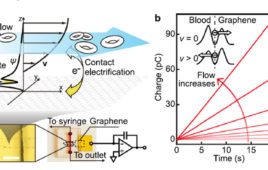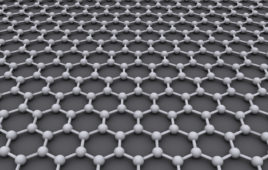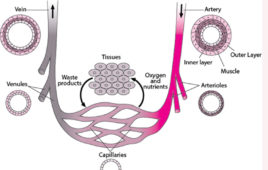
While graphene could be used to improve the strength and mechanical properties of a variety of automotive parts, it is not yet fully economically viable for most applications.
However, for the first time ever, one of the nation’s leading car companies has determined how to use the extremely strong material for a bevy of under the hood components.
Last year, Ford announced a partnership with XG Sciences and Eagle Industries to use graphene nanoplatelets in polyurethane-based fuel rail covers, pump covers and front engine covers, which they said would be beneficial in a number of ways, including by reducing weight, achieving better heat conductivity and decreasing noise.
To reduce costs, the research group found a way to use a small amount—less than half percent—of the “miracle material” for a variety of under the hood vehicle parts.
Bamidele Ali, the chief commercial officer at XG Sciences, explained in an exclusive interview with R&D Magazine why graphene is ideal for use in vehicles.
“There is always this push to make things lighter, to get the max out of it, to get the most efficiency from a fuel economy standpoint,” said Ali. “So graphene provides a lot when it comes to lightweighting vehicles, adding additional strength to different materials that by itself would normally break down.”
Ford began working with suppliers in 2014 to further study graphene and develop running trials to use the extra strength material with various auto parts.
One of the challenging automotive applications has been noise reduction, where previous attempts to reduce the noise inside of vehicles meant adding more material and weight.
However, graphene enabled the researchers to use less material and ultimately add less weight, while reducing the noise produced by preventing it from passing through the foam constituents that are used throughout the interior of cars and in various cavities to manage noise, vibration and harshness, while increasing structural support.
“So you have a sound dampening effect as a result of the graphene,” Ali said.
Tests conducted by Ford found that when graphene is mixed with foam constituents, there is a 17 percent reduction in noise, a 20 percent improvement in mechanical properties and a 30 percent improvement in heat endurance properties over a foam that was constructed without the graphene.
Ali said the team was able to remove enough foam and replace it with graphene to make it cost neutral.
At the end of 2018, Ford went into production on new Ford F-150 and Mustang models with more than ten under the hood components that included graphene.
However, Ali said to get to this point using graphene was not always easy.
“Graphene is a very finicky material and we’ve invested a lot of time and effort in figuring out to get these materials to behave properly,” he said. “It’s difficult because every system is its own ecosystem with its own environment. So you have to figure out which grade of graphene and it’s good that we have more than 16 different grades of graphene to work with so we are not just a one-trick pony.
“There are a lot of things that you have to figure out before you even get into the testing of how to make the material with graphene and get it to work. Otherwise, if you just throw graphene into a system that’s not going to do much for you,” he added.
According to Ali, other car applications that graphene could be used in include conductive anodes, anti-corrosion coatings, batteries and tires.
“It helps with rolling resistance so the tires last at least 30 percent longer in that regard and it’s the same with other polymer systems, which hold and maintain more mechanical strength,” he said.
Graphene could help reduce vehicle emissions, said Ali, and is easier to recycle.
In addition to XG Sciences and Ford other groups have looked at using graphene for car parts. Last year, researchers from the University of Sunderland developed a graphene based carbon-reinforced plastic that could allow a car bumper to absorb 40 percent more energy than a standard bumper.
Also, in 2017, a research team from the University of Alabama successfully fabricated a lighter Chevrolet Camaro car hood using graphene.
Along with working with Ford, XG Sciences is working on a variety of products and materials using graphene, including for Callaway Golf’s Chrome soft and Chrome Soft X golf balls, PET water bottles, thermal adhesives used in portable electronics, lead acid batteries, resistive heating coatings for office automation equipment and vinyl-ester based chopped carbon fiber composites used in water sports equipment.
“We have a lot of different applications out there beyond the partnership with Ford,” Ali said. “This is just coming to a time of commercialization, so you are going to see a lot more this year and next year inside of automotive and outside of automotive.”




